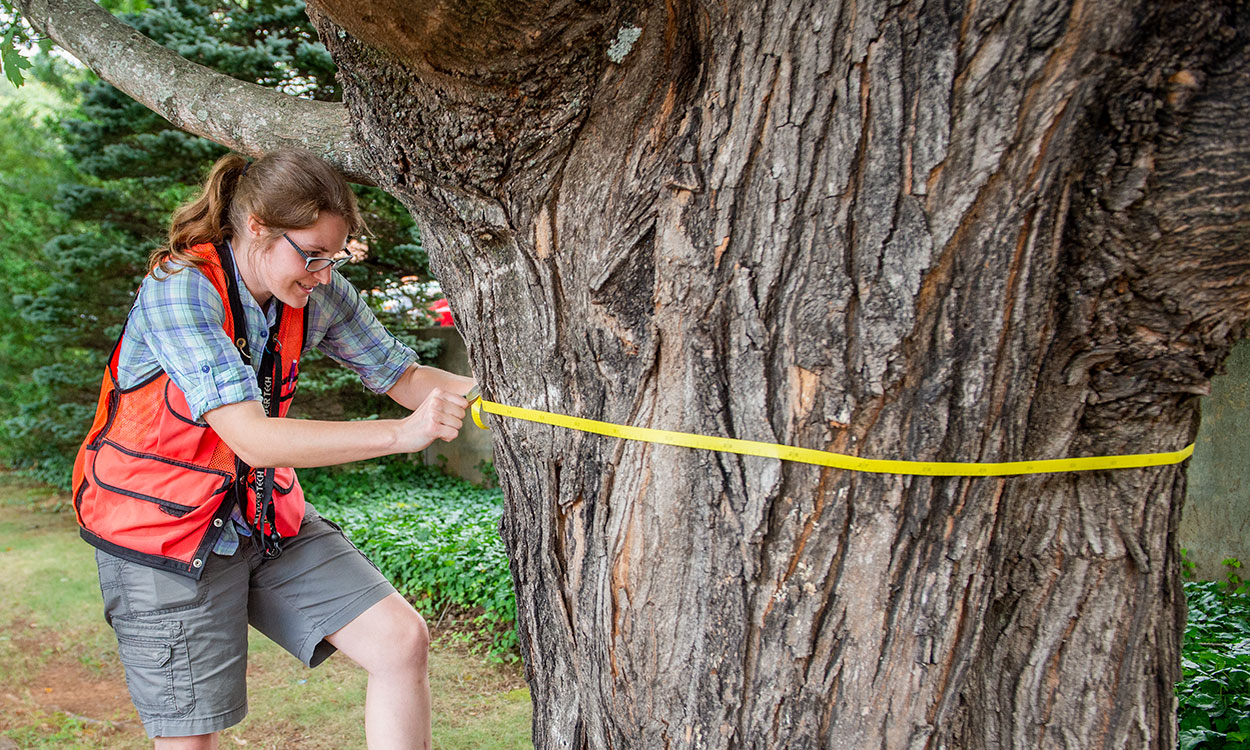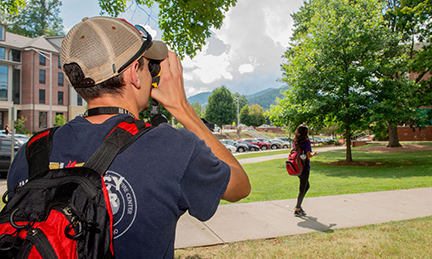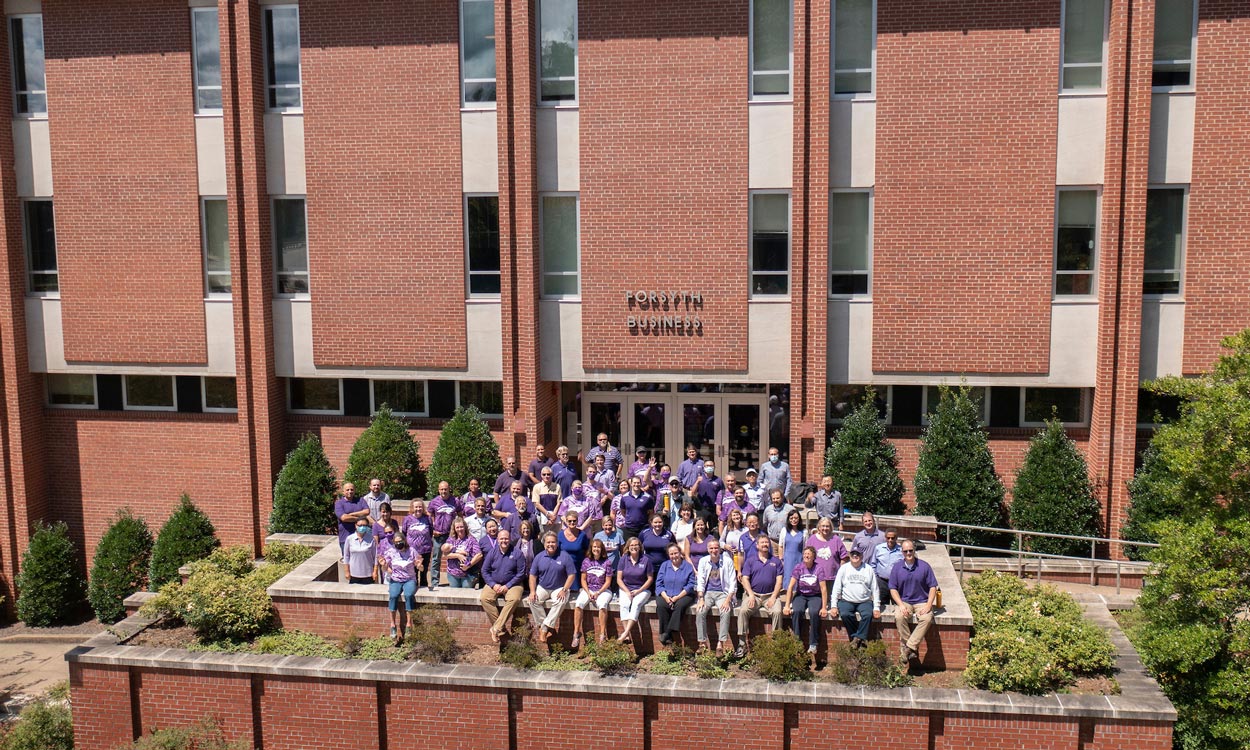Collaboration of students, faculty, alumnus leads to WCUTrees app

Senior Candice Moreau measures the diameter of one of WCU's 858 mature trees on the lower campus.
It won’t be long before the trees that engulf the Western Carolina University campus will be covered with the magnificent colors of fall. For those who have a hard time identifying those trees, WCU students, faculty and alumni have you covered.
Students from natural resources and conservation management classes, environmental science, computer information systems and graphic design, with the guidance of faculty and the assistance of an alumnus, have collaborated to produce a smartphone app called “WCUTrees.” The project was headed by NRCM associate professor Diane Styers.
“It was neat to work with a lot of the different departments across campus, and it’s been really very student-driven,” Styers said. “The mapping, data collection, app development, all of that has been done by students. I think that’s one thing our department prides itself on, and so it just kind of supports that effort we have in the department.”
The app allows users to view and identify nearly every tree on WCU’s developed campus. Users can search for them by name or by using the interactive map. The app also provides information on each species of tree.
The project began in the fall of 2016 when former students Isaac Hayes and Alex Percival used software to identify campus trees and place them on a map, excluding the densely forested areas of campus. From there, former student Kirk Gardner began identifying and measuring all of the mature trees with a diameter greater than nine inches before he graduated in the spring of 2017 and passed the job to Ian McClelland. McClelland, now an alumnus, also measured the unique species located on campus.
Last fall, student Alex Kiser was responsible for taking the tree point file and information that was collected and merging it into a geographic information system. While CIS professor Dan Clapper’s students did the early work on the concept for the app, it was alumnus Chris Ward, a software engineer in Raleigh, who volunteered to take the information and develop the mobile app. Graphic design student Shelby Weaver designed the app icon. WCUTrees is available in the Google Play Store and in Apple’s iTunes.
“The beta versions launched in April,” Styers said. “We did some tweaking over the summer and the updated versions came out in late July. They contain all of the mature trees.”

Senior Jeremy Brendle is measuring the heights of WCU's campus trees.
This semester, NCRM students Andrew Myers, Candice Moreau, Jeremy Brendle and Joey Borders are measuring trees between 2 and 9 inches in diameter, as well as collecting the heights of trees, to add to the app.
Moreau, who along with Myers and Borders is a member of WCU’s Forest Stewards, is excited to be a part of the project.
“I spent a lot of time in the woods measuring trees, and that’s a very enjoyable job for me,” said Moreau, a junior from Francestown, New Hampshire. “When I got this opportunity, I jumped on it. We’re also going to be double-checking some of the other trees and making sure ID’s are right.”
Brendle, a senior from Franklin, said he doesn’t have a lot of experience with mapping trees, but is looking forward to the opportunity to learn.
“It’s a gateway into something I’ve never been into,” Brendle said. “I want to learn some more species. I don’t really know a lot of the cultivars or the landscaping species.”
The project was funded by WCU’s Sustainable Energy Initiative and the North Carolina Forest Service’s Urban and Community Forestry Grant Program.
The app also has served other purposes, Styers said. Facilities management’s ground maintenance can use the tree database to record maintenance activities like pruning and pesticide application. The Office of Sustainability and Energy Management can use it to calculate the ecosystem services that campus trees provide, like carbon capture and sequestration, pollution absorption and shading for energy cost savings.
Plus, associate professor of environmental science Laura DeWald is using the app in her dendrology class this fall.
WCU Tree Fun Facts
- 1,225 mature trees on campus with 89 unique species represented. That average size is 18.7” in diameter.
- 367 mature trees on upper campus.
- 46 different species on upper campus. The most abundant is the eastern hemlock with 71. The largest is a silver maple (56.8” in diameter).
- 858 trees on lower campus.
- 82 different species on lower campus. The most abundant is eastern white pine with 325 (although some have since been removed). The largest is a red maple (47.8” in diameter).

